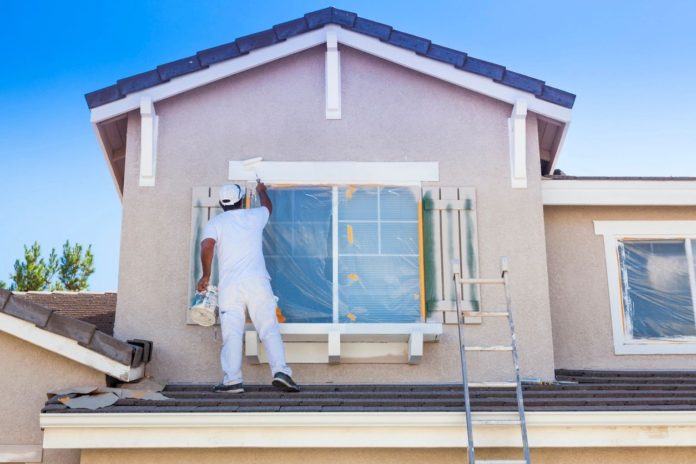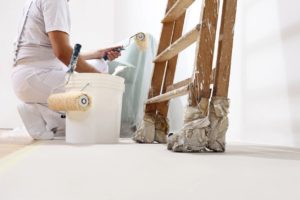
Painting your living spaces can be a big job – so big that many people look for outside help from places similar to Falcon Exteriors in order to get help and advice. Before you call in the pros, however, consider how much you could save by doing it yourself. While it’s true that massive paint projects may require a team of coordinated professionals, small-scale home renovations are more manageable and don’t need to break the bank.
If you’re in the midst of a DIY painting project or getting ready to be, here’s a look at some key tips for doing it well and cost-effectively:
- Start with samples – When you’re trying to decide on paint colors, don’t buy gallons, buy samples. This dramatically limits your investment in colors you’ll end up rejecting.
- Bargain paint prices- A great way to cut your costs on home painting projects is by finding an inexpensive paint source. Local recycling or hazardous waste centers will sometimes have overstock paint available- usually for a discounted price, or no price at all. You can also check hardware stores, paint stores and other retailers that sell paint to see what’s currently available at a reduced or clearance price.
- Buy bulk paint – If you know you’re going to need a lot of paint for your project, you may as well buy it in bulk. Save money by opting for a single five-gallon container instead of five one-gallon cans. You also might see if your paint supplier offers a discount on large purchases.

- Don’t overbuy – While buying in bulk can mean a lower per-gallon price, the savings will be immaterial if you don’t actually use the paint. To avoid overbuying, use an online paint calculator to determine exactly how much you’ll need to cover the square footage of your space.
- Use primer before painting – Because a base coat of primer can enhance coverage, it’s a good way to reduce the amount of paint you’ll need and save a little money as a result. A coat of primer plus a coat of paint typically cost less than two or three coats of paint.
- Choose one color for your whole home – Sticking to one basic shade throughout your home means buying only one paint color for your project. This allows you to reap the benefits of bulk pricing, while also creating a seamless look throughout your living spaces. You’ll likely also save on paint if you choose a color that is a similar shade or slightly darker than what is currently on your walls because it will cover better.

- Care for your equipment – If you take proper care of your rollers, brushes, trays and other tools, you won’t have to replace them as often. Between painting sessions, tightly wrap your paint-covered rollers and brushes in plastic wrap or plastic bags secured with tape or ties. Lining your roller pan with a plastic bag that can be inverted and thrown away will make for easy cleanup.
Whether you’re repainting the kitchen or updating your entire first floor, use the tips above to save time and money. By approaching your project with confidence and cutting costs along the way, you’ll ensure that your DIY painting project will be an affordable success!
Content Provided by Raider Painting
Resources:
https://money.usnews.com/money/blogs/my-money/2013/10/11/ready-to-redecorate-7-ways-to-save-on-paint
https://www.thespruce.com/tips-saving-money-at-paint-store-4121114
https://www.thespruce.com/easiest-fastest-way-to-paint-a-house-1821069
https://www.livingonadime.com/10-tips-painting-room/







































